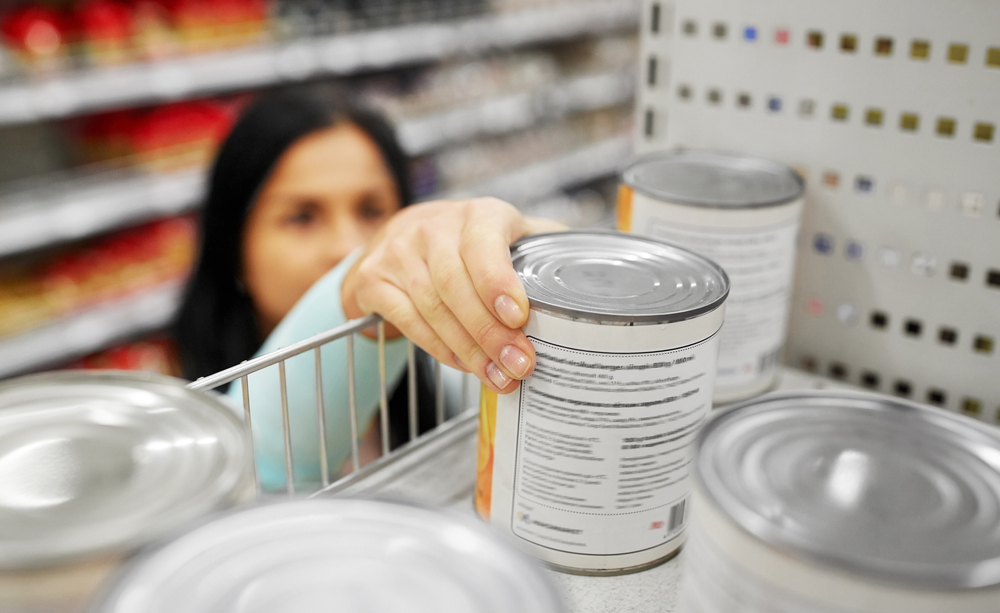SNAP, or food stamps as most people know it, assists millions of individuals each month in ensuring they have access to food during difficult times. The federal program started in 1939 and now spends over $100 billion annually to help keep people fed in order to maintain their health when life is not so easy. Due to the COVID-19 pandemic, SNAP expanded its eligibility for people to receive their food after the government shut down businesses in many states. With the continuously changing economic landscape, it is important to understand how revisions to the food assistance program can alter lives as a result.
Short History
The basics of the modern SNAP program started with President Franklin D. Roosevelt and the New Deal, though it was late in the Great Depression in 1939, but ended in 1943. The 1950s saw Congress working to start a new version, but the initial pilot program started in 1961 until it was fully legislated into permanence in 1964. The program would grow, with the first major changes coming from 1971 to 1974, with consumer protection and nationwide uniformity being brought in. There were more revisions over the years, which would help those needing food stamps, even for short periods.
Online Response
The SNAP program will be moving to the online market and is currently working with retailers to initiate this process. The initial stage in collaborating with retailers involves establishing a website that provides information on the applicable regulations for accepting payments through their online stores. People will now have access to several vendors they had previously only heard about and will have help in areas that are shutting down brick-and-mortar stores because they are in high-crime areas. Evolution happens in the marketplace and this is one of the ways to keep up.
Economic Issues
There are many reasons that the economic health of the people receiving the benefits needs to be examined, along with how they spend the benefits. While some sell their food stamps for nefarious purposes, most use them for actual food. The cost increases from inflation and other causes mean that food prices rise too often for people to plan properly, which means families and individuals are missing out before a month ends. The program is working on this, which is why they are going to allow online shopping and other cost-cutting measures.
Senior Assistance
It has been found that around half, or more, of the senior citizens who could be receiving needed assistance with obtaining food, are not. The SNAP program is working to educate people on this, which will increase the population served, but these are people in dire need of food assistance. They have gone to Congress for the funds to be able to do this, as this is a vulnerable population that needs to know the benefits they can receive. No one wants the retired community to be hurt because they have no idea there is help.
Integrity Matters
There are many ways in which people can use their SNAP benefits to allow them to get cash for things like drugs. The program has been working with Congress to enact better ways to ensure the integrity of the program through oversight measures that spot when retailers are abusing their participation. Cutting off access to easy cash sources for program benefits helps keep drug usage down, cuts off sources of income for crime networks, and allows people to get some trust in how their tax dollars are spent. It will help get convictions of those abusing the needed system.
Work Training
One of the ways that those using the SNAP program can help ensure their futures is by using the work training that is available with the program. Some people want a hand-up, which is available if they ask. Not all states have a clear way of doing this, but the federal part of the program is working to help people in a way that allows them to find work that will pay them far better than government handouts. This means working with the states to get the message out and to ensure those applying know about available training.
Medical Concerns
Those who are suffering from medical issues are more likely to need help when it comes to purchasing food, especially if they are disabled. Research has shown that no matter the skills people have, their income is greatly reduced when they are disabled. Physical or mental problems can cause people to not be able to do jobs they had become used to handling. Benefits from the ACA and other federal programs work with SNAP benefits to keep these folks healthier, which is essential in helping those dealing with COVID-19. Malnutrition makes those ill sicker and makes emergencies longer.
Critic Education
One of the biggest concerns for the SNAP program is that critics want to cut what is spent, overusing the point that it has been used for criminal purposes. Tax dollars being used to keep people on welfare programs brings about questions when many could be working, but bragging they are on the programs. The program administrators work with Congress and states to address the concerns about abuse and criminal activity that has long been associated with it. Money spent on people abusing the system takes away from those who desperately need it.
Data Coordination
One of the biggest ways that SNAP administrators obtain data to help the program’s beneficiaries is by coordinating with other government programs. This requires new software and access between the agencies that administer them. One of the biggest areas is the coordination between SNAP and Medicaid, which has the biggest crossover of people needing help. The data allows them to know where problems are happening, and how well the programs are working. It takes programmers and experts to set up but gives hard facts to all government levels.
People need help occasionally, with food being the top of the list for what makes the biggest difference for those suffering from unemployment, a medical crisis, or other emergencies. Malnutrition worsens situations, especially if medical issues are involved in the mix. Most use food assistance only until they can better themselves – which ultimately is the goal of SNAP.
SNAP, or food stamps as most people know it, assists millions of individuals each month in ensuring they have access to food during difficult times. The federal program started in 1939 and now spends over $100 billion annually to help keep people fed in order to maintain their health when life is not so easy. Due to the COVID-19 pandemic, SNAP expanded its eligibility for people to receive their food after the government shut down businesses in many states. With the continuously changing economic landscape, it is important to understand how revisions to the food assistance program can alter lives as a result.
Short History
The basics of the modern SNAP program started with President Franklin D. Roosevelt and the New Deal, though it was late in the Great Depression in 1939, but ended in 1943. The 1950s saw Congress working to start a new version, but the initial pilot program started in 1961 until it was fully legislated into permanence in 1964. The program would grow, with the first major changes coming from 1971 to 1974, with consumer protection and nationwide uniformity being brought in. There were more revisions over the years, which would help those needing food stamps, even for short periods.
Online Response
The SNAP program will be moving to the online market and is currently working with retailers to initiate this process. The initial stage in collaborating with retailers involves establishing a website that provides information on the applicable regulations for accepting payments through their online stores. People will now have access to several vendors they had previously only heard about and will have help in areas that are shutting down brick-and-mortar stores because they are in high-crime areas. Evolution happens in the marketplace and this is one of the ways to keep up.
Economic Issues
There are many reasons that the economic health of the people receiving the benefits needs to be examined, along with how they spend the benefits. While some sell their food stamps for nefarious purposes, most use them for actual food. The cost increases from inflation and other causes mean that food prices rise too often for people to plan properly, which means families and individuals are missing out before a month ends. The program is working on this, which is why they are going to allow online shopping and other cost-cutting measures.
Senior Assistance
It has been found that around half, or more, of the senior citizens who could be receiving needed assistance with obtaining food, are not. The SNAP program is working to educate people on this, which will increase the population served, but these are people in dire need of food assistance. They have gone to Congress for the funds to be able to do this, as this is a vulnerable population that needs to know the benefits they can receive. No one wants the retired community to be hurt because they have no idea there is help.
Integrity Matters
There are many ways in which people can use their SNAP benefits to allow them to get cash for things like drugs. The program has been working with Congress to enact better ways to ensure the integrity of the program through oversight measures that spot when retailers are abusing their participation. Cutting off access to easy cash sources for program benefits helps keep drug usage down, cuts off sources of income for crime networks, and allows people to get some trust in how their tax dollars are spent. It will help get convictions of those abusing the needed system.
Work Training
One of the ways that those using the SNAP program can help ensure their futures is by using the work training that is available with the program. Some people want a hand-up, which is available if they ask. Not all states have a clear way of doing this, but the federal part of the program is working to help people in a way that allows them to find work that will pay them far better than government handouts. This means working with the states to get the message out and to ensure those applying know about available training.
Medical Concerns
Those who are suffering from medical issues are more likely to need help when it comes to purchasing food, especially if they are disabled. Research has shown that no matter the skills people have, their income is greatly reduced when they are disabled. Physical or mental problems can cause people to not be able to do jobs they had become used to handling. Benefits from the ACA and other federal programs work with SNAP benefits to keep these folks healthier, which is essential in helping those dealing with COVID-19. Malnutrition makes those ill sicker and makes emergencies longer.
Critic Education
One of the biggest concerns for the SNAP program is that critics want to cut what is spent, overusing the point that it has been used for criminal purposes. Tax dollars being used to keep people on welfare programs brings about questions when many could be working, but bragging they are on the programs. The program administrators work with Congress and states to address the concerns about abuse and criminal activity that has long been associated with it. Money spent on people abusing the system takes away from those who desperately need it.
Data Coordination
One of the biggest ways that SNAP administrators obtain data to help the program’s beneficiaries is by coordinating with other government programs. This requires new software and access between the agencies that administer them. One of the biggest areas is the coordination between SNAP and Medicaid, which has the biggest crossover of people needing help. The data allows them to know where problems are happening, and how well the programs are working. It takes programmers and experts to set up but gives hard facts to all government levels.
People need help occasionally, with food being the top of the list for what makes the biggest difference for those suffering from unemployment, a medical crisis, or other emergencies. Malnutrition worsens situations, especially if medical issues are involved in the mix. Most use food assistance only until they can better themselves – which ultimately is the goal of SNAP.




